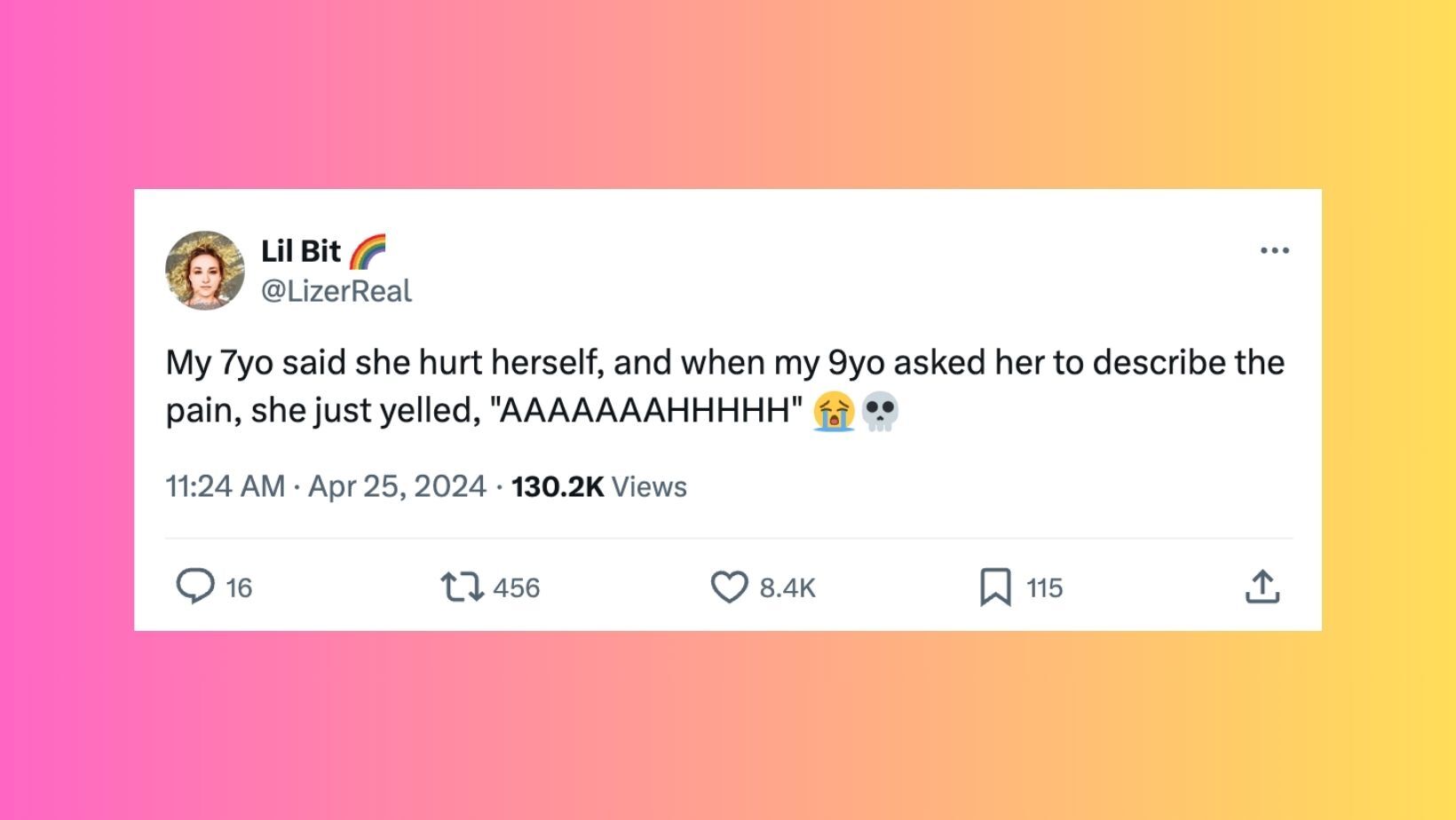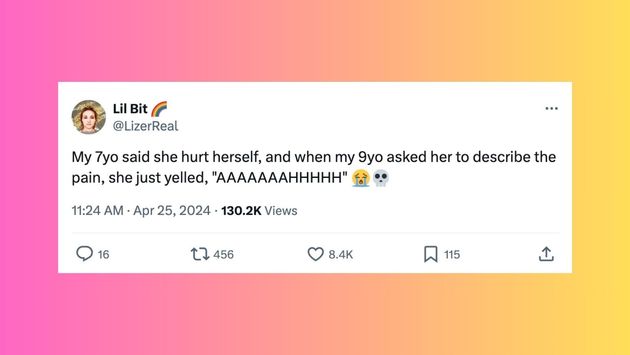Transgender women should not be put on single-sex female NHS wards in England, the government is proposing.
Patch to protect against measles shows promise
Painless and easier to store than injections, it remains early days for microneedle-patch technology.
Long snouts protect foxes when diving headfirst in snow

When hunting for mice in winter, red and arctic fox are known to plunge headfirst at speeds of 2-4 meters per second, but their sharp noses reduce the impact force in snow and protect them from injury, according to a new Cornell University study.
The fundamental research sheds light on the biomechanics of the unique hunting behavior (known as mousing), advances our understanding of animal adaptations and offers insights into snow injuries people experience during snowboarding or skiing.
The study published April 29 in the Proceedings of the National Academy of Sciences.
While there have been many studies of water birds and animals such as porpoises and dolphins diving from air into water, interactions between animals and the air-snow interface have not been well-researched. Snow has fluid-like properties when light and fluffy, and solid-like properties when compacted, such as when people make snowballs.
“The fox’s sharp snout doesn’t significantly compress the snow, it penetrates it without much resistance,” said Sunghwan Jung, the paper’s corresponding author and professor of biological and environmental engineering. Jisoo Yuk, a doctoral student in Jung’s lab, is the paper’s first author.
In the study, the authors scanned skulls of red and arctic foxes (from the Canidae family) and lynx and puma skulls (from the Felidae family) at the American Museum of Natural History in Manhattan. They 3D-printed the skulls and attached each to a sensor that measured impact force. The skulls were then dropped into both snow and water, and the researchers entered data into computer models to compare impacts of both.
Jung and colleagues found that the foxes’ sharp snouts penetrated the snow with little resistance, minimizing potential tissue damage during a headfirst dive. “Without much compression, in spite of the high-speed impact, the snow behaves like water,” Jung said. But the flat Felidae snouts compressed the snow upon impact, creating a large and potentially damaging resistance.
When mousing in snow, the fox’s long snout also allows it to reach its prey earlier, as mice are very sensitive to movements in their environment and can quickly escape. Other behavioral studies have shown that prior to pouncing, foxes shake their heads to listen to the rustling sounds of mice or other animals beneath the snow’s surface, thereby gauging the depth of the sound source.
“This is a very dangerous process, but we haven’t had reports of foxes getting injured,” Jung said.
The study was funded by the National Science Foundation.
How ‘vampire facials’ infected three women with HIV
The infections, made public by the CDC, raised questions about the safety of cosmetic treatments.
Enzymes open new path to universal donor blood

The quest to develop universal donor blood has taken a decisive step forward. Researchers at DTU and Lund University have discovered enzymes that, when mixed with red blood cells, are able to remove specific sugars that make up the A and B antigens in the human ABO blood groups. The results have been published in the scientific journal Nature Microbiology.
“For the first time, the new enzyme cocktails not only remove the well-described A and B antigens, but also extended variants previously not recognized as problematic for transfusion safety. We are close to being able to produce universal blood from group B donors, while there is still work to be done to convert the more complex group A blood. Our focus is now to investigate in detail if there are additional obstacles and how we can improve our enzymes to reach the ultimate goal of universal blood production,” says Professor Maher Abou Hachem, who is the study leader at DTU and one of the senior scientists behind the discovery.
He states that the discovery is the result of combining the expertise of DTU researchers in enzymes from the human gut microbiota and Lund University researchers in carbohydrate-based blood groups and transfusion medicine.
High demand for donor blood
Human red blood cells carry specific complex sugars structures (antigens) that define the four ABO blood groups A, B, AB and O. These antigens control compatibility between donors and recipients for safe blood transfusion and organ transplantation. Donor blood is screened for disease markers and the main blood groups. It can then be stored refrigerated for up to 42 days.
The need for donor blood is high due to the elderly making up a larger proportion of the population and more patients undergoing blood-intensive medical procedures. Successfully converting A or B blood types into ABO universal donor blood can markedly reduce the logistics and costs currently associated with storing four different blood types. In addition, the development of universal donor blood will lead to an increased supply of donor blood by reducing the waste of blood approaching its expiry date.
The reason why it is necessary to remove the A and B antigens to create universal donor blood is because they can trigger life-threatening immune reactions when transfused into non-matched recipients.
The concept of using enzymes to generate universal donor blood was introduced more than 40 years ago. Since then, higher efficiency enzymes to remove the A and B antigens were discovered, but researchers are still not able to explain or abolish all immune reactions related to the blood, and therefore these enzymes are still not used in clinical practice.
Enzymes from the gut
The research groups from DTU and Lund University have gone new ways to find enzymes that can remove both the A and B blood antigens and the sugars that block them. The research teams discovered new mixtures of enzymes from the human gut bacterium Akkermansia muciniphila that feeds by breaking down the mucus, which covers the surface of the gut. It turns out that these enzymes are exceptionally efficient, as the complex sugars at the surface of the intestinal mucosa share chemical resemblance with those found at the surface of blood cells.
“What is special about the mucosa is that bacteria, which are able to live on this material, often have tailor-made enzymes to break down mucosal sugar structures, which include blood group ABO antigens. This hypothesis turned out to be correct,” says Maher Abou Hachem.
The researchers in this study tested 24 enzymes, which they used to process hundreds of blood samples.
“Universal blood will create a more efficient utilization of donor blood, and also avoid giving ABO-mismatched transfusions by mistake, which can otherwise lead to potentially fatal consequences in the recipient. When we can create ABO-universal donor blood, we will simplify the logistics of transporting and administering safe blood products, while at the same time minimizing blood waste” says Professor Martin L. Olsson, the leader of the study at Lund University.
The researchers from DTU and Lund University have applied for a patent on the new enzymes and the method for enzyme treatment and expect to make further progress on this in their new joint project over the next three and a half years. If successful, the concept needs to be tested in controlled patient trials before this can be considered for commercial production and clinical use.
The initial research project is funded by the Independent Research Fund Denmark (Technology and Production Sciences, FTP), the Swedish Research Council, ALF grants from the Swedish government and county councils as well as the Knut and Alice Wallenberg Foundation and Research Fund Denmark, Natural Sciences, FNU), while the new continued project is funded by the Novo Nordisk Foundation, Interdisciplinary Synergy Programme.
FACTS:
Donorblood
In Scandinavia, the four main blood types are distributed with approximately 40-45 percent blood type A, the majority of whom are so-called RhD positive and 10-15 percent RhD negative, followed by blood type O with about 40 percent, B with about 10 percent and AB with about 5 percent. Red blood cells from blood group O are the only type that can be used by all receiving patients regardless of ABO type.
Bacterium from the gut
Akkermansia muciniphila is a bacterium found abundantly in the guts of most healthy humans. This bacterium can break down mucus in the gut and produces beneficial compounds such as the short-chain fatty acid propionate, in addition to exerting beneficial effects on body weight and metabolic markers.
Gemini south reveals origin of unexpected differences in giant binary stars

Using the Gemini South telescope a team of astronomers have confirmed for the first time that differences in binary stars’ composition can originate from chemical variations in the cloud of stellar material from which they formed. The results help explain why stars born from the same molecular cloud can possess different chemical composition and host different planetary systems, as well as pose challenges to current stellar and planet formation models.
It is estimated that up to 85% of stars exist in binary star systems, some even in systems with three or more stars. These stellar pairs are born together out of the same molecular cloud from a shared abundance of chemical building blocks, so astronomers would expect to find that they have nearly identical compositions and planetary systems. However, for many binaries that isn’t the case. While some proposed explanations attribute these dissimilarities to events occurring after the stars evolved, a team of astronomers have confirmed for the first time that they can actually originate from before the stars even began to form.
Led by Carlos Saffe of the Institute of Astronomical, Earth and Space Sciences (ICATE-CONICET) in Argentina, the team used the Gemini South telescope in Chile, one half of the International Gemini Observatory, supported in part by the U.S. National Science Foundation and operated by NSF NOIRLab. With the new, precise Gemini High Resolution Optical SpecTrograph (GHOST) the team studied the different wavelengths of light, or spectra, given off by a pair of giant stars, which revealed significant differences in their chemical make-up. “GHOST’s extremely high-quality spectra offered unprecedented resolution,” said Saffe, “allowing us to measure the stars’ stellar parameters and chemical abundances with the highest possible precision.” These measurements revealed that one star had higher abundances of heavy elements than the other. To disentangle the origin of this discrepancy, the team used a unique approach.
Previous studies have proposed three possible explanations for observed chemical differences between binary stars. Two of them involve processes that would occur well into the stars’ evolution: atomic diffusion, or the settling of chemical elements into gradient layers depending on each star’s temperature and surface gravity; and the engulfment of a small, rocky planet, which would introduce chemical variations in a star’s composition.
The third possible explanation looks back at the beginning of the stars’ formation, suggesting that the differences originate from primordial, or pre-existing, areas of nonuniformity within the molecular cloud. In simpler terms, if the molecular cloud has an uneven distribution of chemical elements, then stars born within that cloud will have different compositions depending on which elements were available at the location where each formed.
So far, studies have concluded that all three explanations are probable; however, these studies focused solely on main-sequence binaries. The ‘main-sequence’ is the stage where a star spends most of its existence, and the majority of stars in the Universe are main-sequence stars, including our Sun. Instead, Saffe and his team observed a binary consisting of two giant stars. These stars possess extremely deep and strongly turbulent external layers, or convective zones. Owing to the properties of these thick convective zones, the team was able to rule out two of the three possible explanations.
The continuous swirling of fluid within the convective zone would make it difficult for material to settle into layers, meaning giant stars are less sensitive to the effects of atomic diffusion — ruling out the first explanation. The thick external layer also means that a planetary engulfment would not change a star’s composition much since the ingested material would rapidly be diluted — ruling out the second explanation. This leaves primordial inhomogeneities within the molecular cloud as the confirmed explanation. “This is the first time astronomers have been able to confirm that differences between binary stars begin at the earliest stages of their formation,” said Saffe.
“Using the precision-measurement capabilities provided by the GHOST instrument, Gemini South is now collecting observations of stars at the end of their lives to reveal the environment in which they were born,” says Martin Still, NSF program director for the International Gemini Observatory. “This gives us the ability to explore how the conditions in which stars form can influence their entire existence over millions or billions of years.”
Three consequences of this study are of particular significance. First, these results offer an explanation for why astronomers see binary stars with such different planetary systems. “Different planetary systems could mean very different planets — rocky, Earth-like, ice giants, gas giants — that orbit their host stars at different distances and where the potential to support life might be very different,” said Saffe.
Second, these results pose a crucial challenge to the concept of chemical tagging — using chemical composition to identify stars that came from the same environment or stellar nursery — by showing that stars with different chemical compositions can still have the same origin.
Finally, observed differences previously attributed to planetary impacts on a star’s surface will need to be reviewed, as they might now be seen as having been there from the very beginning of the star’s life.
“By showing for the first time that primordial differences really are present and responsible for differences between twin stars, we show that star and planet formation could be more complex than initially thought,” said Saffe. “The Universe loves diversity!”
Ministers seek to overhaul disability benefits system
Disability payments that help with extra living costs could be scrapped in favour of more tailored support.
Why Do Millennials Feel Compelled To Write ‘Lol’ After Everything?
When did “lol” become the equivalent of a punctuation mark for millennials?
Nick Russell, a millennial from Memphis, Tennessee, tacks “lol” onto texts to sidestep potentially awkward or loaded conversation.
“It’s the difference between texting ‘I think I love you’ to a crush versus ‘I think I love you, lol,‘” Russell said. “In the latter case, I could always rely on the old ‘just kidding!’”
Advertisement
“It helps lighten the internal tension I could be feeling about whatever I’m sending,” he added.
Rebecca Reynoso, a millennial from Chicago, deploys a breezy “lol” at the end of her work texts and chats to take the edge off any message. It’s a way to quickly establish tone; a “lol” tells her co-workers she’s “approachable” and “non-threatening.”
“It’s like a tension-breaking mechanism,” she told HuffPost.
It defuses the potential for hostility in personal relationships, too. “Could you wash the dishes, lol” to your spouse or roommate sounds a lot better than a coarse, curtly communicated, “Could you wash the dishes.” (If you hadn’t noticed, millennials and younger generations have killed off the question mark.)
“’Lol’ has been around for so long that its meaning evolved, like a Pokémon. And yet, it clearly belongs to the digital realm that some people still find confusing.”
– Daria Bahtina, a linguistics lecturer at the University of California, Los Angeles
Alex Liggett, a millennial from Pittsburgh, likens millennials’ “lol” overuse to “a scream at the state of the world.”
Advertisement
“My default mode is to feel that what I have to say isn’t important, so it’s also sort of a great eraser,” he said. “But I’ve transitioned to ‘haha’ instead of ‘lol’ because I read that ‘lol’ is millennial-coded.”
Let Gen Z and Gen Alpha scoff at “lol” all they want. Most millennials say if you want to take their “lol,” you’ll have to pry it from their cold, dead hands.
“Tone is just so hard to convey through text otherwise,” said Kashif Pasta, a director and writer who’s a millennial.
Too many emojis in texts can make you look unhinged. But you also don’t want to look like an ice queen. Even a simple, straightforward period at the end of a sentence feels too stern, Pasta said.
“In real-life conversations, we’d smile, subtly chuckle or laugh in moments that aren’t technically funny at all,” he said. “With ‘lol,’ we’re just going, ‘Hey … you’re safe.’”
Advertisement
The way Pasta sees it, millennials, those born between 1981 and 1996, are like the pilot generation for text and online messaging, having gone from an internet-free existence to an internet-centric one — and “lol” has been with them for most of that shift.
“We’re the exact right age to think of email as a proxy for physical mail and texting as a proxy for phone calls or in-person conversations,” he said. “We learned to text on T9 phones with texts that cost money and had character limits, so space was at a premium and we had to convey context as efficiently as possible.”
Here’s why linguists think millennials can’t stop ‘lol’-ing
Daria Bahtina, a linguistics lecturer at the University of California, Los Angeles, thinks “lol” is a true linguistic chameleon ― and used a truly millennial comparison to make her point.
“It’s been around for so long that its meaning evolved, like a Pokémon,” Bahtina told HuffPost. “And yet ‘lol’ clearly belongs to the digital realm that some people still find confusing.”
It started out as “laugh out loud,” but it’s long since transmogrified into a mark of humility and self-deprecation: “Don’t take this — or me — too seriously. I sure don’t.”
Advertisement
“For millennials, it’s a way to either make a neutral message warmer and more casual or a way to make a more negative message polite,” Bahtina said. “It’s like hedging or minimising a request with ‘no biggie if you disagree.’”

Images By Tang Ming Tung via Getty Images
In more academic terms, “lol” is what linguists like to call a discourse marker, said Anna-Marie Sprenger, a Ph.D. candidate in linguistics at the University of Chicago.
“A discourse marker is a little word or phrase that helps organise a thought or a chunk of conversation in a way that indicates the sort of ‘flavour’ of how the speaker or writer wants that bit of language interpreted by their interlocutor,” Sprenger told HuffPost.
In the English language, these can be cute interjections: “oh,” “well,” “so,” “you know” and “I mean.”
Advertisement
Interestingly, every once in a while, “lol” is explicitly passive-aggressive.
“For one project at UCLA, students observed that there’s been a mild increase of ‘lol’ as passive aggression,” Bahtina said. “They noticed more passive-aggressive tweets carrying ‘lol’ at the end rather than at the beginning or end of a sentence.”
Here’s why therapists think millennials cling so hard to ‘lol’
Now that we’ve gotten the linguistic breakdown, let’s delve deeper into the millennial psyche: What does it mean for a generation to feel so obligated to be self-deprecating and good-humoured all the time? Are they OK?
“I think using ‘lol’ after a sentence is a way to laugh things off when you fear burdening others, which is such a prominent worry of our generation,” said Lindsey Gallop, a therapist at CZ Therapy Group in Denver.
Jordan Kurtz, also at CZ Therapy Group, looks at “lol” as a way to get some distance between yourself and any knotty emotional content. Vulnerability is scary, especially over text.
“It’s the difference between ‘I’m having a hard day today’ and ‘I’m having a hard day today, lol,’” Kurtz said. “With the former, personal struggle is allowed to have gravity.”
Advertisement
Maya Nehru, a millennial marriage and family therapist in Los Angeles, said she’s noticed two common, generational themes that might be driving “lol” overuse: the fear of loss and the anxiety around being judged and culturally cast off.
“We millennials have lived through a period of enormous change and disruption on many levels. It’s what defines us, and with change comes loss to some degree,” Nehru said. “Perhaps adding ‘lol’ to texts is the millennial’s way of protecting themselves from potential loss ― maybe we’re trying to save face.”
Plus, millennials have grown up alongside social media, where criticism and judgment are rampant and the potential to be dragged is ever present.
“I think the ‘lol’ is a behaviour that subconsciously eases our anxiety around being liked, belonging and maintaining our sense of self,” Nehru said.

Luis Alvarez via Getty Images
Advertisement
Women are probably more likely to use it, too, said Kelly McKenna, a therapist in New York City.
“Many millennials, especially women, are constantly worrying about other people’s feelings and trying to manage other people’s reactions to anything they say or do,” she said. “By adding ‘lol,’ it helps lighten the mood and hopefully reduces the risk you might upset someone by communicating assertively.”
Whatever the reasons for the “lol” reflex, linguists say it’s impressive how much heavy lifting those three little letters do.
Earlier generations might have considered digital communication as a “lean media” — insufficient for conveying the depth of our thoughts and feelings and lacking the warmth of face-to-face communications ― but Bahtina said that millennials “have long defied this notion.”
“Younger generations are so adept at using a dynamic mix of punctuation, capitalization, creative respellings, special symbols, abbreviations and emojis,” she said. “Millennials found a way to transport the richness of human expression into the realm of texts and tweets, crafting a language that is just as expressive and nuanced as face-to-face conversation.”
The Funniest Tweets From Parents This Week (April 20-26)
Not Checking This WiFi Setting Is Like ‘Leaving Your Front Door Open’ To Hackers

We love the internet. Whether we’re placing insomnia-fuelled eBay bids on action figures from our childhoods, emailing the latest Taylor Swift conspiracy theory to our best friend, or just paying our electric bill, being online makes our lives more fun, more connected and a whole lot easier.
Unfortunately, there are countless creeps who love that we love the internet — and who would love to swipe our personal information. Last year saw a record-breaking number of data breaches, which increased 20% between 2022 and 2023, so, if we’re going to live digitally (and how can we not?), we need to be vigilant about protecting our privacy.
Advertisement
We can start locking down our information by looking at how secure the internet in our own homes is.
“You will probably not be shocked to hear that we’re the problem on this one,” Alysa Hutnik, a privacy lawyer with Kelley, Drye & Warren LLP in Washington, D.C., told us — Raj Punjabi and Noah Michelson, hosts of HuffPost’s “Am I Doing It Wrong?” podcast. “It’s usually human error in how you set it up and how you manage your Wi-Fi.”
Listen to the full episode by pressing play, and discover tons of tips and tricks for keeping your online privacy protected:
The first thing Hutnik advised we immediately do is check our router settings.
“You get it out of the box — don’t leave yourself with the default factory settings because guess what? Those are public, right?” she warned. “It’s really easy for hackers to get into. You’re able to change those factory settings, including your password, and so setting up a really strong password and not having the default is super important.”
Advertisement
Next, we want to ensure we’re using encrypted settings.
“Usually somewhere in [your settings], there’s [an option to choose] “WPA,” or Wireless Protected Access,” she said. “You can just enable that, and that’s essentially like, you’re not leaving your front door open, right? You wouldn’t do that in real life.”
Hutnik recommended that checking our settings doesn’t stop at our routers.
“Anytime you’re buying technology, go to settings,” she said. “Usually there’s a privacy option and a security option … spend 60 seconds just exploring what those options are. Companies are getting so much better — we’ve got a whole lot of new [privacy] laws — so they are offering new options. [These protective settings] may not be default, but you can certainly turn them on.”
Hutnik had loads of other potent privacy tips, including this one that takes only a second.
“[I am] paranoid as a privacy lawyer,” Hutnik told us. “I like to keep [my webcam] covered if I’m not intentionally using it. There is potential of malware where your device can be taken over [and hackers could use your camera to see into your home].”
She covers her cam with a Post-it note or a sticker when it’s not in use, and if she’s done working on her laptop, she always closes it.
“These are just things to think about — again, you’re mitigating risk. It doesn’t mean that you are going to get hacked, but I would rather somebody not see into my room if I can avoid it.”
Advertisement
We also discussed how to make your passwords the strongest they can be, which setting on her phone she almost always turns off, and much more. So listen to the full episode above or wherever you get your podcasts.
Make sure to subscribe to “Am I Doing It Wrong?” so you don’t miss a single episode, including our investigations of the ins and outs of tipping, how to apologise or vanquish your credit card debt, how to find love online or overcome anxiety, tips for online shopping, taking care of your teeth and pooping like a pro, secrets to booking and staying in a hotel, how to deal with an angry person, cooking tips from celebrity chef Jet Tila, shocking laundry secrets, the tips and tricks for cleaner dishes and more.
Need some help with something you’ve been doing wrong? Email us at AmIDoingItWrong@HuffPost.com, and we might investigate the topic in an upcoming episode.







